Aronia or black-fruited aronia is a small bush from the rose family, notable for its richly coloured foliage in autumn, its spring white flowering, and its black berries, resembling blueberries. It is one of those lesser-known shrubs from which an astonishing jam can be made. Its fruits, true concentrates of antioxidants, are indeed edible, and consuming them cooked in the form of jam or jelly is one of the best ways to enjoy them.
Are you a fan of "black" jams? Here’s how to make a truly original one to change from blackberry or blueberry jam!
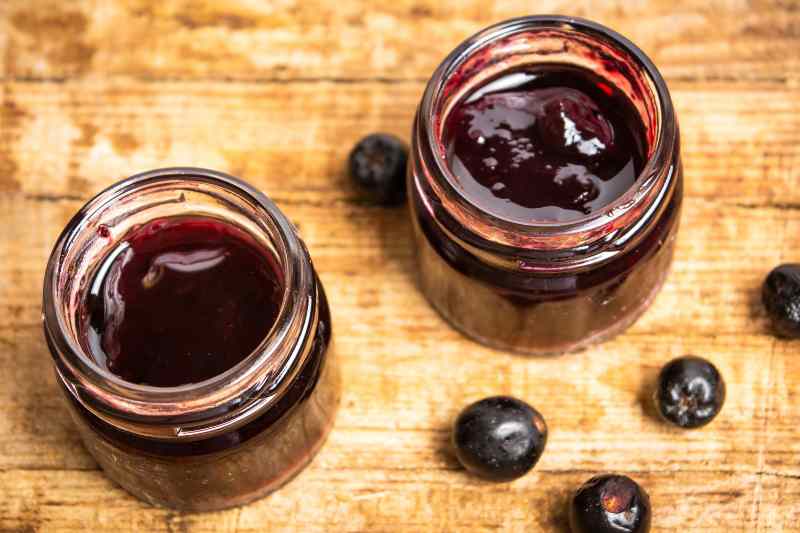
Aronia, who are you?
Still relatively uncommon in our region, Aronia is a deciduous shrub native to North America, valued for its berries and its stunning autumn foliage turning to wine-red. Growing in its natural habitat in clear undergrowth and wet areas, it can be found throughout the country as it is very hardy and not very demanding regarding soil and exposure. The shrub measures between 1m and 2m, grows slowly, with erect stems that gradually arch with age. In mid-spring, aronia produces small, grouped white flowers, washed with pale pink, which are highly melliferous and resemble hawthorn. These transform in summer into small red or black drupes, depending on the species.
Considered a superfruit, the tart taste of its berries is reminiscent of blackcurrants or blueberries, but with significantly more astringency.
Among the Aronias, we find shrubs with red berries (the Aronia arbutifolia, with strawberry tree-like leaves) and shrubs with black berries (the most common being Aronia melanocarpa and Aronia prunifolia).
In addition to its ornamental aspect, aronia is recognised for the antioxidant properties of its berries, their richness in vitamins, and their benefits for the digestive system.
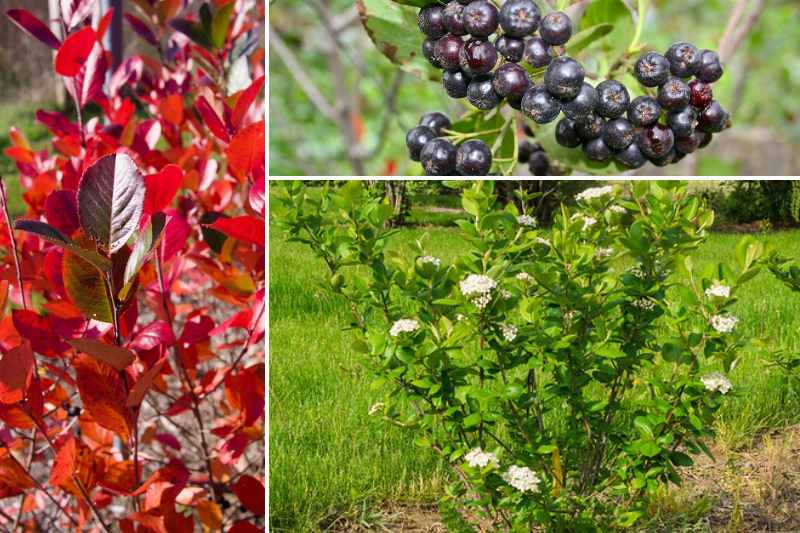
Which aronia species for making jam?
Among the aronia, we distinguish those with red berries from those with black berries. For making jam, we recommend the varieties with black berries, which have a slightly less astringent pulp and are sweeter. Therefore, Aronia melanocarpa and Aronia prunifolia (or Purple Aronia) should be preferred.
Aronia prunifolia 'Viking' is known for its productivity, yielding many fresh, sweet fruits, perfect for jams (the berries are initially red and then turn glossy purple-black). The variety Aronia melanocarpa 'Hugin' also has a good yield and produces good fruits that are not too acidic.
When to harvest aronia berries?
The ideal time for harvesting is between late summer and early autumn, when the fruits are well-ripened and full of flavour. A late harvest, around September, when the fruits are over-ripe, results in sweeter berries, thus reducing the natural astringency of the aronia. Moreover, do not wait for the birds, especially robins, who are fond of them, to start eating them in your place!
If you cannot harvest them as late as possible to remove their bitterness, we recommend storing your aronia berries in the freezer for a few weeks.
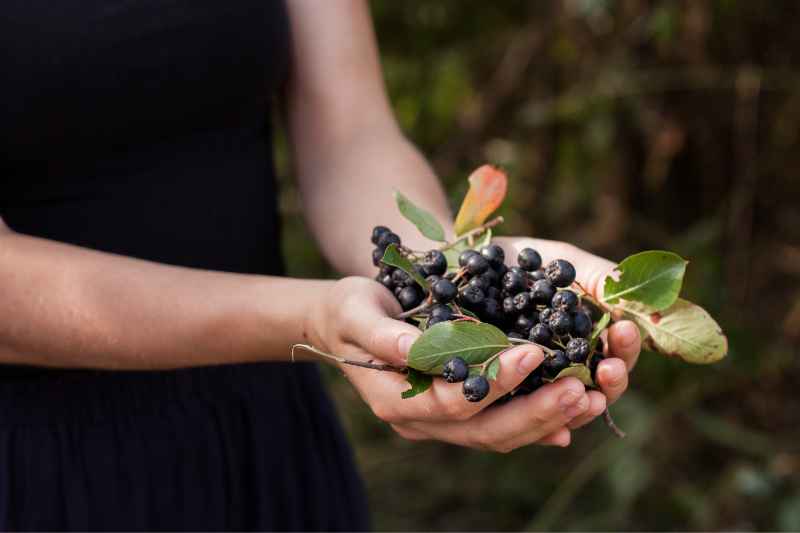
Aronia jam: the recipe
Ingredients
1 kg of aronia berries
900 g of granulated sugar
The juice of one lemon
- After rinsing and draining the aronia berries, cook them for 5 minutes in a little water, then crush them slightly to facilitate the extraction of the stones. You can use a food mill or another similar utensil.
- In a jam basin or large saucepan, mix the berries, pulp, sugar, and lemon juice.
- Bring to a boil, then reduce the heat and let simmer for 30 minutes, stirring occasionally with a wooden spoon.
- Once the jam has thickened (test with a little jam poured onto a cold saucer; it should hold its shape, not be too runny), pour it into sterilised jars using a jam funnel or a small ladle, and seal them tightly.
- Turn the jars upside down to create a vacuum, and let them cool completely.
- Label with the date of the day.
The storage is the same as for any jam: in a dark place, at room temperature or cool, like a cellar, basement, or in a cupboard.
Enjoy your jam on buttered toast at breakfast, with pancakes, or with fresh cheese, but also as an accompaniment to hard cheeses or with good cured ham... a delight!
Note: You can also cook aronia berries in the form of syrup, smoothie, coulis, or liqueur, sorbets, and compotes, and mix them into pear or apple crumbles.
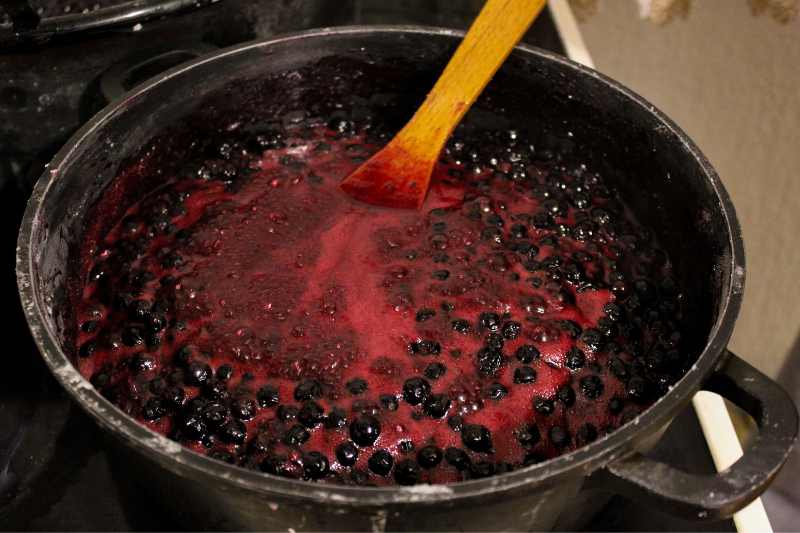
Variations
If you prefer the texture of jelly, which is smoother, strain the mixture after cooking (using a chinois or fine sieve) to remove the skins. The jelly will be translucent and free of pieces. You can also prepare the jam in two stages, with an initial boil to let it rest overnight, then resume cooking the next day, which allows for a nice consistency.
Also try making aronia jams with apple, nectarines, ripe plums, or the juice of a few oranges; it’s a successful sweet marriage that reduces astringency, or make a mix of black fruits in equal parts, aronia and blueberries or aronia and blackcurrants, a delight...
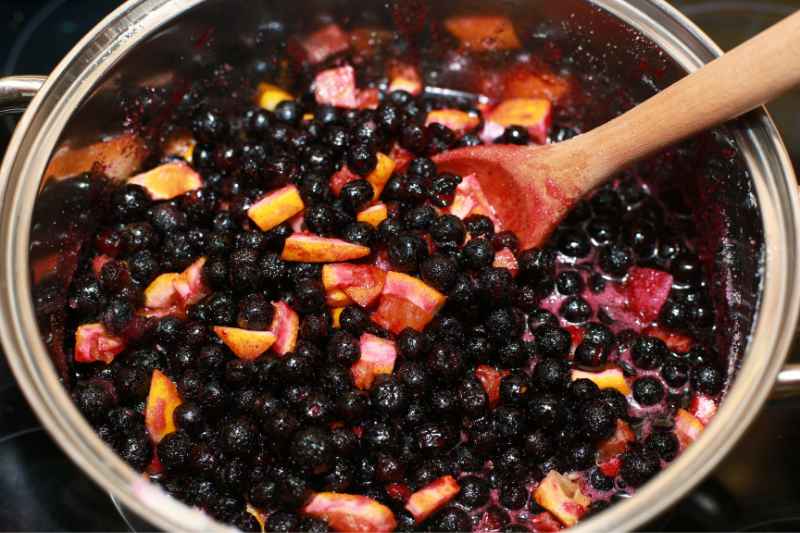
To go further
Discover our range of Aronia in our online shop.
Also discover another very original jam from the Mediterranean: aubergine jam!
Also read our articles on the edible forest and on edible gardening.
































Comments